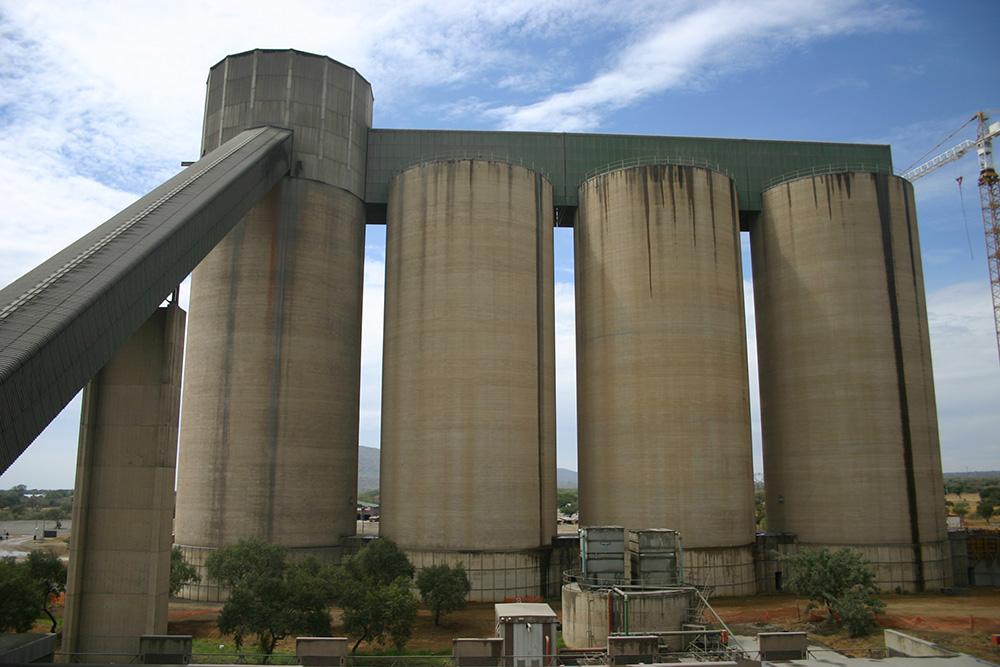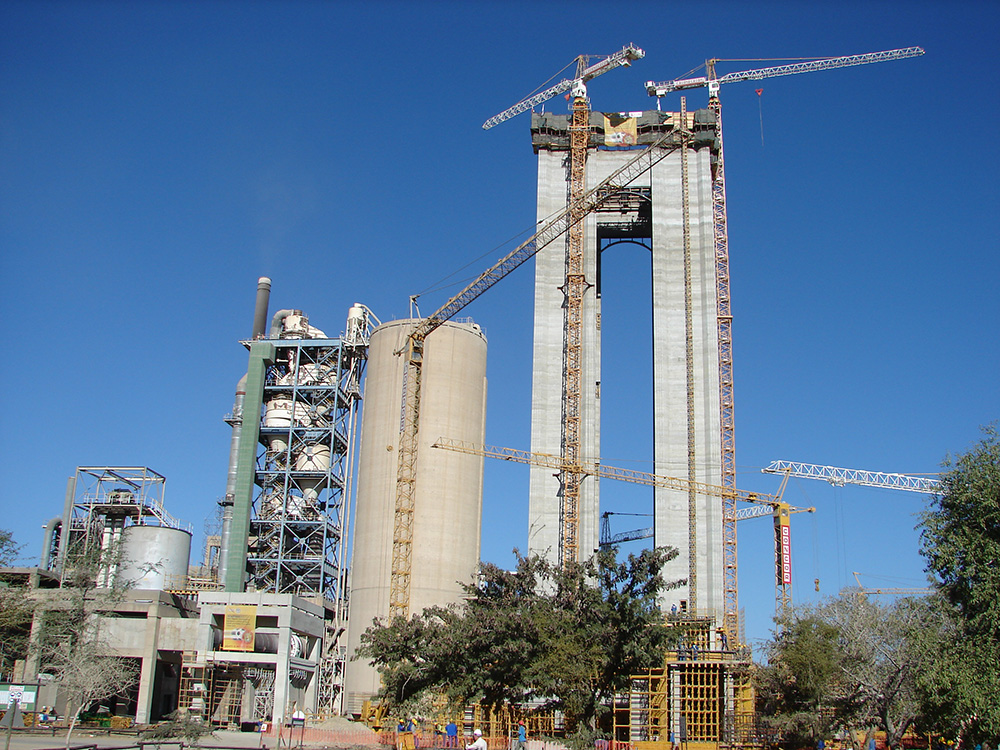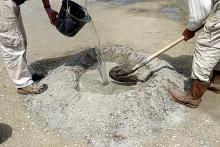
The influx of imported cement in South Africa has over the years been a thorn in the side of local cement producers. After lobbying for several years by Cement and Concrete SA (CCSA), the consolidated cement and concrete association, to protect the local cement industry and local jobs from the threat of ‘cheap’ imports, government has finally taken seemingly decisive action. This follows the announcement that, from 4 November 2021, South Africa’s National Treasury has designated cement, meaning that the use of imported cement on all government-funded projects is prohibited.
The action comes as the industry reels from the current economic slump, which has been exacerbated by the lack of meaningful infrastructure projects. Bryan Perrie, CEO of CCSA, explains the National Treasury has issued a circular to all relevant state departments about the new ruling in terms of the Preferential Procurement Regulations. The designation of cement will apply to all projects entered into by state entities, including national, provincial and local authorities, as well as state-owned enterprises (SOEs). The designation prescribes that all organs of state must, from 4 November, stipulate in tender invitations that only SA-produced cement, produced with locally-sourced raw materials, will be allowed for use on all public-sector construction projects. The National Treasury has stipulated a 100% threshold for both common and masonry cements.

Elsie Snyman, CEO of Industry Insight, says that with over one million tonnes of cement and 330,000 tonnes of clinker imported each year, the ban will definitely help cement producers increase their sales volumes, capacity utilisation, profitability and, more importantly, protect jobs.
In Perrie’s view, this is an important ruling that protects a sector so vital to the national economy. Furthermore, he believes that it has come at the right time in view of the multi-billion-rand infrastructure projects planned by the government over the next three years. Last year, the government announced 50 strategic infrastructure projects and 12 special projects as the initial phase of a wide-ranging infrastructure spending programme to aid post-pandemic recovery efforts.
“The designation of cement will assist in protecting the local cement industry from unfair competition. Although imported cements reaching South Africa may conform to regulatory standards, South African cement producers have many other compliance issues to deal with, including the Mining Charter, transformation targets as well as social and labour plans, none of which importers have to comply with. Compliance by its nature costs money, and consequently puts local producers in an unfair position. In addition, local producers are subject to carbon tax, which the importers are also exempt from.”
At the time of writing, an Industry Insight survey noted that the announcement had already boosted investor sentiment, with both PPC and Sephaku Cement share prices increasing by 20% and 40%, respectively. This had added a total of ZAR2.26 billion to the market capitalisation values of the two cement producers.
Commenting on the significance of the designation, Snyman says local SA cement producers have been arguing against ‘cheap’ imported cement for years. She notes that imported cement gained a footprint – for the first time in the country’s history – when local producers operated at close to 100% capacity in the build up to the 2010 FIFA World Cup. While this resulted in the injection of additional capacity by Sephaku, it also gave roots to the cement import market.
“The imposition of tariffs somehow reduced imports from Pakistan, but as we have seen over the years, this seems to have little impact as imports from Vietnam continue unabated, which means that simply adding tariffs is not a sustainable solution. Tariffs are also dealt with on a case by case (country by country) basis, and take considerable time and effort, so the ban is a major win for local producers,” she says.
However, Snyman reiterates that the ban relates to public-sector work only. “While this has a major impact on importers, the real impact on local producers, in my opinion, may be minimal. Imported cement is used primarily in the coastal areas (KwaZulu-Natal and Eastern Cape), so the designation might not have a large national impact. However, the decision sets an important precedent, and it could prevent imported materials coming in from other countries,” she says.
According to an Industry Insight survey, imports contribute 5% to total production capacity in South Africa (based on 2019 figures that are more realistic as COVID-19 distorted the market in 2020).
“Our estimates suggest production capacity stands at 23,460,000 tonnes per annum, including that of Mamba and CEMZA. However, local producers are operating at well below production capacity, estimated to be around 54% in 2019 and 47% in 2020. In this scenario, imports in 2019 (at 1,218,799 tonnes) contributed 10% of total domestic cementitious sales of 12,725,912 tonnes. In 2020, the volumes slowed to roughly 9% due to COVID-19 restrictions,” explains Snyman.

The Industry Insight survey also finds that cement imports increased to 79,509 tonnes in July and 75,775 tonnes in August 2021, from just under 60,000 tonnes in June 2021. Cement was imported from Pakistan in July, but nothing was reported in August, with the product only coming in from Vietnam. The 75,000 tonnes imported from Vietnam in August came at a free-on-board (FOB) rate of ZAR599/tonne, on a par with rates reported in July, and was between 5% and 10% higher compared to FOB rates from Pakistan.
This brings the total amount of cement imported during the first eight months of 2021 to 749,671 tonnes, at an FOB value of ZAR445 million. Compared to the same period in 2020, imports increased by 51% (considering that lockdown restrictions hampered imports in 2020) but were also 3% higher compared to the same period in 2019 (pre-COVID period), largely driven by the escalation of imports mainly from Vietnam, but also Pakistan during the first half of 2021.
Imports, however, slowed considerably between June and August compared to the same period in 2019, down 40%, with the majority coming from Vietnam. Over the past 12 months, a total of 1,256,984 tonnes of cement was imported, nearly reaching the peak volumes recorded in early 2015 when over 1.4 million tonnes of cement were imported over the 12-month period up to February 2015 (with imports then emanating largely from Pakistan). Vietnam has now taken the spotlight, as it is now responsible for most cement imports into the country.
The designation, explains Snyman, also bans the use of cement manufactured using imported raw materials. This, she says, will have a serious impact on CEMZA, a joint venture between South African company OSHO Cement and Germany-based Heidelberg Cement, which manufactures cement using imported clinker.
The company’s exposure to public-sector contracts is about 45% of its total production. While the ban on imported cement is justified, says Snyman, the ban on using imported raw materials is perhaps a little more questionable, as this is common practice for many other local manufacturers in other sectors (including steel).
“CEMZA’s capacity (in the form of a grinding facility using imported clinker) was installed in South Africa at a significant cost of about ZARR500 million, and much needed jobs were created in the Eastern Cape area, where government has pleaded for and supported industrial investment over the years. Using imported raw materials in local manufacturing is certainly not unique to the cement industry, so the repercussions of this could have a much broader negative economic/investment impact,” argues Snyman.

Commenting on whether the designation of cement is the lasting solution to cement imports, Snyman says it’s difficult to ascertain, but according to Industry Insight research, it could deal a major blow to imports as the public sector is an important client to cement importers.
However, reasons Snyman, overall general government, excluding state-owned enterprises (SOEs), contributed only 34% to total investment in construction in 2019 (including building and civils), and 50% if SOE investment is included.
“If we then scale this down to just selected areas in the country, such as KwaZulu-Natal and Eastern Cape, one does have to question the impact of the ban at a national scale. It will all depend on whether imported cement will have buy-in within the private sector, and as a highly price-sensitive market, this may not be an impossible scenario. One must also consider whether or not the ban will reduce the need to push for tariffs which, in the long run, could decrease the usage of imported cement. It is therefore important for local producers to not rely solely on the government ban to protect their industries,” says Snyman.
Perrie says the industry will indeed not rest on its laurels, as CCSA has already applied for a sunset review of the anti-dumping tariffs imposed on Pakistani cement in 2015. An investigation in this regard has been initiated by the SA International Trade Administration Commission (ITAC).
“The original anti-dumping tariffs were only imposed for a five-year period. The initial tariff period lapsed at the end of 2020, and in line with the rules, we have applied for a sunset review to try and prove that the tariffs should remain for longer. ITAC initiated an investigation which is underway and may retain, reduce, increase or remove the tariffs,” concludes Perrie.









